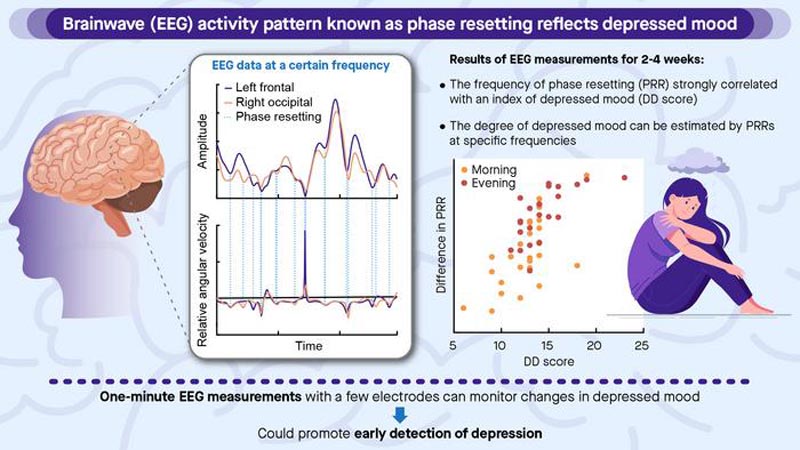
Assessing Depression Through Brainwave Activity in Healthy Individuals

Brainwave (EEG) activity pattern known as phase resettting reflects depressed mood
Credit: University of Tsukuba
Depression is a common but serious mental disorder that requires early diagnosis and treatment; however, it is currently difficult to do so. Electroencephalogram (EEG) is a test that easily measures electrical activity, and the equipment is relatively inexpensive, such that it may be used to promote the early detection and treatment of depression. However, such a method has not been developed.
The participants of this study were instructed to measure their EEG for 1 min every day at home across two to four weeks to investigate its relationship to the intensity of their depressed mood. The results demonstrated that the occurrence of phase resetting for many participants, in which brain waves from different brain regions synchronize, increased with high levels of depressed mood at certain frequencies but decreased at other frequencies.
These results indicate that changes in depressed mood can be objectively measured using EEG for 1 min in a resting state and are expected to facilitate the early detection of depression and the development of novel treatment in the future.
This work was supported by JSPS KAKENHI Grant Numbers JP18H03304 and JP23K17457 and by JKA through its promotion funds from KEIRIN RACE (2020M-117).
Original Paper
Title of original paper:
Brainwave activities reflecting depressed mood: a pilot study
Journal:
Scientific Reports
DOI:
10.1038/s41598-023-40582-y
Correspondence
Professor MORITA, Masahiko
Institute of Systems and Information Engineering, University of Tsukuba
Related Link
Institute of Systems and Information Engineering (in Japanese)
Media Contact
KAMOSHITA Kimio
University of Tsukuba
kohositu@un.tsukuba.ac.jp
www.tsukuba.ac.jp












